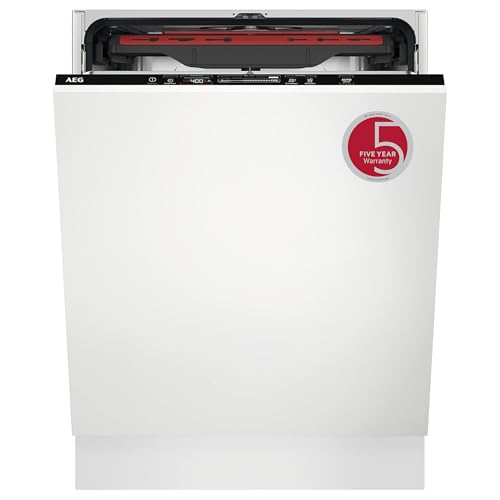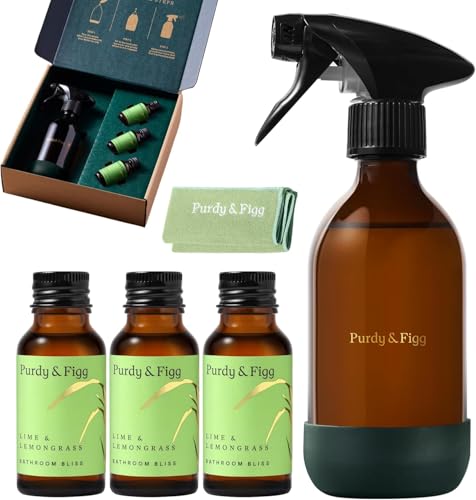




Rubber is a commonly used material in various industries, including manufacturing, construction, and healthcare. It is known for its flexibility, durability, and resistance to wear and tear. However, like any material, rubber is susceptible to damage from certain substances, and one such substance is bleach. In this article, we will explore the effects of bleach on rubber and whether it can cause any damage.
Bleach is a strong chemical that is commonly used as a disinfectant and cleaning agent. It is known for its ability to remove stains and kill bacteria and viruses. However, its powerful properties can also have adverse effects on certain materials, including rubber.
When rubber comes into contact with bleach, it can undergo a chemical reaction that leads to degradation or discoloration of the material. The chlorine in bleach can react with the polymers in rubber, causing the rubber to become brittle, crack, or break. Additionally, prolonged exposure to bleach can cause the rubber to lose its elasticity and become stiff.
It is important to note that the extent of the damage caused by bleach depends on various factors, such as the concentration of bleach, the duration of exposure, and the type of rubber. Some types of rubber are more resistant to bleach than others. For example, natural rubber is more susceptible to damage from bleach than synthetic rubber.
Therefore, it is recommended to avoid using bleach directly on rubber surfaces or products unless it is specifically stated to be safe. Instead, it is better to use alternative cleaning methods and products that are less likely to cause damage to rubber.
In conclusion, bleach can indeed damage rubber due to its strong chemical properties. It can cause the rubber to degrade, discolor, become brittle, or lose its elasticity. Therefore, it is important to take precautions and avoid using bleach on rubber surfaces unless it is deemed safe.
Can Bleach Cause Harm to Rubber Surfaces?
The use of bleach on rubber surfaces may cause harm and damage.
Rubber, a common material used in various applications such as seals, gaskets, and hoses, can be negatively affected by bleach. When bleach comes into contact with rubber, it can lead to degradation, discoloration, and weakening of the rubber material.
Here are some reasons why bleach can be harmful to rubber surfaces:
- Chemical reaction: Bleach, which contains chlorine, can react with the rubber molecules and break down their structure. This reaction can cause the rubber to become brittle and weak, increasing the likelihood of cracks and tears.
- Oxidation: Bleach is an oxidizing agent, meaning it can promote the oxidation of the rubber surface. This oxidation process can result in the rubber becoming discolored, faded, or even bleached.
- Staining: Bleach can leave behind stains on rubber surfaces, particularly if the bleach is not diluted properly or is left on the rubber for an extended period. These stains can be difficult to remove and may permanently mar the appearance of the rubber.
- Deterioration of rubber properties: The chemical properties of rubber, such as its flexibility and elasticity, can be diminished when exposed to bleach. This can lead to the rubber losing its ability to function properly or perform its intended function.
It is important to note that the severity of the damage caused by bleach may vary depending on the type of rubber and the concentration of bleach used. Some rubber materials may be more resistant to bleach, while others may be more susceptible to damage.
To protect rubber surfaces from harm:
- Avoid direct contact: Try to prevent bleach from coming into direct contact with rubber surfaces whenever possible. If cleaning is required, consider using alternative cleaning agents that are safe for rubber.
- Dilute bleach: If bleach must be used, ensure it is properly diluted according to the manufacturer’s instructions. Using excessive concentrations of bleach can increase the likelihood of damage to rubber surfaces.
- Rinse thoroughly: After cleaning with bleach, thoroughly rinse the rubber surface with water to remove any residual bleach. This will help minimize the potential for damage.
- Protective coatings: Applying a protective coating or sealant specifically designed for rubber surfaces can provide an additional layer of protection against bleach and other potentially damaging substances.
In conclusion, while bleach may be an effective cleaning agent for many surfaces, caution should be exercised when using it on rubber. To avoid potential harm and damage, it is advisable to explore alternative cleaning methods or consult with manufacturers for specific recommendations on cleaning rubber surfaces.
Effects of Bleach on Rubber
The use of bleach on rubber products can have several damaging effects. Bleach is a strong oxidizing agent that can corrode and break down rubber materials over time. The specific effects of bleach on rubber can vary depending on the type and concentration of the bleach, as well as the composition of the rubber itself.
1. Discoloration
One of the most noticeable effects of bleach on rubber is discoloration. Bleach can cause the rubber to change color, typically resulting in a yellow or brownish tint. This discoloration can be permanent and difficult to remove.
2. Deterioration
Bleach can also cause rubber to deteriorate and become brittle over time. The chemical properties of bleach can break down the bonds in rubber, causing it to lose its elasticity and strength. This can lead to cracking, tearing, and overall degradation of the rubber material.
3. Weakening

Additionally, bleach can weaken the structure of rubber, making it more susceptible to damage from other sources. Rubber that has been exposed to bleach may become more prone to tearing, punctures, and other forms of mechanical stress.
4. Leaching and Reaction
Depending on the specific composition of the rubber and the bleach, there is a possibility that certain chemicals and additives used in the rubber manufacturing process can leach out or react with the bleach. This can alter the properties of the rubber, further compromising its integrity and performance.
5. Permeability
Some rubber materials have natural resistance to liquids and gases, making them suitable for use in applications where impermeability is important. However, exposure to bleach can increase the permeability of rubber, allowing liquids and gases to pass through more easily. This can render the rubber ineffective for its intended purpose.
Conclusion: It is generally recommended to avoid using bleach on rubber, as it can cause discoloration, deteriorate the material, weaken its structure, cause chemical reactions, and increase permeability. If you need to clean rubber products, it is advisable to use mild soaps or cleaning agents specifically designed for rubber materials.
How to Protect Rubber from Bleach Damage
When using bleach in your cleaning routine, it’s important to take precautions to protect rubber materials from damage. Bleach can be harmful to rubber and cause it to deteriorate or break down over time. By following these tips, you can ensure the longevity of your rubber products:
1. Avoid Direct Contact
- Avoid directly applying bleach to rubber surfaces. If possible, remove rubber items from the area that will be cleaned with bleach.
- Use gloves or other protective coverings when handling bleach to prevent accidental contact with rubber materials.
2. Dilute the Bleach

- When using bleach for cleaning, always dilute it according to the manufacturer’s instructions.
- Using a weaker bleach solution can help minimize the potential damage to rubber items.
3. Rinse Thoroughly
- After using bleach, rinse rubber items thoroughly with clean water.
- Make sure to remove any residue from the rubber surface to prevent further chemical interaction.
4. Apply a Protective Coating
- Consider applying a protective coating, such as a silicone spray or rubber sealant, to the surface of rubber products.
- This can create a barrier between the rubber and bleach, reducing the risk of damage.
5. Store Properly
- When not in use, store rubber items away from areas where bleach is frequently used.
- Keep them in a cool, dry place to prevent unnecessary exposure to bleach or other damaging chemicals.
By taking these precautions, you can minimize the potential damage that bleach can cause to your rubber materials. Remember to always follow the manufacturer’s instructions for both the bleach and the rubber products to ensure their longevity.
Tips for Cleaning Rubber Safely
- Use mild soap and water: When cleaning rubber items, it is best to use a mild soap and water solution. This will help remove dirt and grime without causing any damage to the rubber.
- Avoid using bleach: While bleach may be a powerful cleaning agent, it can be damaging to rubber. It can cause the rubber to become discolored, brittle, or even break down over time.
- Gently scrub with a soft brush: To remove stubborn stains or dirt, gently scrub the rubber surface with a soft brush. Avoid using abrasive materials or brushes, as they can scratch or damage the rubber.
- Rinse thoroughly: After cleaning, make sure to thoroughly rinse the rubber item with clean water. This will help remove any soap residue and prevent it from causing any damage.
- Avoid excessive heat: Rubber can be sensitive to high temperatures, so it is important to avoid placing rubber items near direct heat sources or exposing them to excessive heat. This can cause the rubber to warp or melt.
- Store in a cool, dry place: To maintain the condition of rubber items, store them in a cool, dry place. This will help prevent moisture or humidity damage, which can lead to mold or deterioration.
- Inspect for damage: Regularly inspect rubber items for any signs of damage, such as cracks, tears, or degradation. If any damage is found, it is best to replace the item rather than attempting to clean it.
- Follow manufacturer’s instructions: Always refer to the manufacturer’s instructions for cleaning and maintenance of rubber items. They may have specific recommendations or precautions that should be followed.
Alternative Cleaning Methods for Rubber
1. Vinegar Solution
Mix equal parts of white vinegar and water in a bowl. Dip a cloth or sponge into the solution and gently scrub the rubber surface. Rinse with clean water and pat dry with a towel.
2. Baking Soda Paste
Create a paste by mixing baking soda with water. Apply the paste to the rubber and use a soft brush or cloth to gently scrub the surface. Rinse thoroughly with water and dry with a towel.
3. Lemon Juice
Squeeze fresh lemon juice onto a cloth or sponge and rub it onto the rubber surface. Allow the lemon juice to sit for a few minutes, then rinse with clean water and dry with a towel.
4. Dish Soap and Water
Mix a small amount of dish soap with warm water in a bucket or sink. Dip a cloth or sponge into the soapy water and clean the rubber surface. Rinse with clean water and dry with a towel.
5. Rubber-Safe Cleaner
Use a rubber-safe cleaner specifically formulated for cleaning rubber surfaces. Follow the instructions on the cleaner’s packaging for best results.
6. Rubber Cleaning Wipes
Alternatively, you can use pre-moistened rubber cleaning wipes. These are convenient for quick cleaning and can be easily disposed of after use.
7. Avoid Harsh Chemicals
Avoid using harsh chemicals, such as bleach or ammonia, as they may damage the rubber surface. Stick to mild cleaning solutions or the methods mentioned above.
8. Regular Cleaning

Regularly cleaning rubber surfaces can help prevent dirt and grime buildup, making it easier to maintain the rubber’s appearance and prolong its lifespan.
Remember to always test any cleaning method on a small, inconspicuous area of the rubber surface before applying it to the entire surface to ensure it does not cause any damage.
FAQ
Can I use bleach to clean my rubber shoes?
Yes, you can use bleach to clean rubber shoes. However, you need to dilute the bleach with water and be careful not to use too much, as it can damage the rubber if used in high concentrations.
Will bleach damage the rubber seals on my washing machine?
Bleach can potentially damage the rubber seals on your washing machine if used in high concentrations or left to sit for too long. It is best to dilute bleach with water and rinse the seals thoroughly after using bleach to minimize any potential damage.
Does bleach ruin rubber gloves?
Bleach can cause damage to rubber gloves if used in high concentrations or if the gloves are exposed to bleach for a long period of time. It is recommended to rinse the gloves thoroughly after using bleach to prevent any potential damage.
Is it safe to use bleach on rubber bands?
Using bleach on rubber bands can weaken and damage them over time. It is best to avoid using bleach on rubber bands and opt for alternative cleaning methods, such as mild soap and water.














